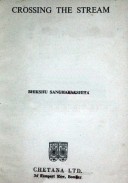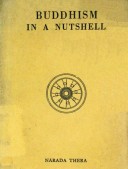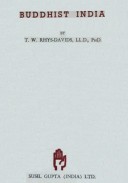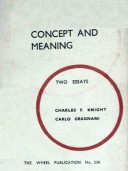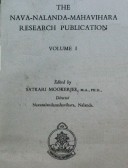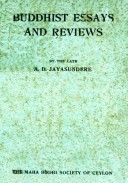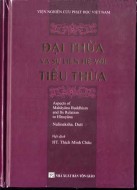Tìm Sách
Sách tiếng Anh-English >> BUDDHIST SCRIPTURES
Thông tin tra cứu
- Tên sách : BUDDHIST SCRIPTURES
- Tác giả : Edward Conze
- Dịch giả :
- Ngôn ngữ : Anh
- Số trang : 242
- Nhà xuất bản : Penguin Books
- Năm xuất bản : 1959
- Phân loại : Sách tiếng Anh-English
- MCB : 12010000003040
- OPAC :
- Tóm tắt :
BUDDHIST SCRIPTURES
Selected and Translated by
EDWARD CONZE
Penguin books
CONTENTS
ACKNOWLEDGEMENTS
INTRODUCTION
PART I: THE TEACHER
Chapter 1. The Buddha’s Previous Lives
Introductory Note
1. Sakyamuni’s Meeting with Dipankara
2. a. The Bodhisattva and the Hungry Tigress
b. The Bodhisattva as the Preacher of Patience
3. Outline of a Bodhisattva’s progress
Chapter 2. The Legend of the Buddha Shakyamuni
Introductory Note
1. The birth of the Bodhisattva – 2. Asita’s visit – The Bodhisattva’s youth and marriage – 4. the awakening – 5. Withdrawal from the women – 6. The flight – 7. The apparition of a Mendicant – 8. The dismissal of Chandaka – 9. the practice of austerities – 10. Nandabala’s gift – 11. The defeat of Mara – 12. The Enlightenment – 13.the meeting with the mendicant – 14. The meeting with the five mendicants – 15. Turning the wheel of Dharma – 16. The meeting of father and son – 17.Further conversions – 18. Devadatta – 19. The desire for death – 20. The leave-taking from Vaisali, the final couch, instructions to the Mallas – 21. Parinirvana – 22. The Relics – 23. The Scriptures.
PART II: DOCTRINES
Chapter 1. Morality
Introductory Note
1. The five precepts, with Buddhagosa’s commentary
2. Rules of monastic restraint
3. the monk’s life
3a. The Buddha’s advice to Scriptures (E.M.H) – 3B. The Rhinoceros (E.M.H.)
4. Verses from the Sanskrit Dhammapada
4a. The chapter on Karma – 4b. The chapter on Morality.
5. Popular Moral Buddhism
6. Laymen and Monks
6a. Their respective attainments – 6b. Their respective tasks, and the question of the adoration of relics
Chapter 2. Meditation
Introductory Note
1. The advantages of Meditation
2. the practice of introversion
3. the progressive steps of meditation
the restraint of the senses – How the senses cause bondage – Moderation in eating – The avoidance of sleep – Full awareness of the postures, etc – The advantages of solitary meditation – Concentration and the forsaking of idle thoughts – How to deal with thoughts concerning family and homeland – How to be mindful of death – The four holy truths.
4. The six types of persons
5. The five miraculous powers
6. Zen
6a. Sessan Amakuki . Zen Meditation (R.T.L.) – 6b. Rosen Takashina. Controlling the mind (R.T.L)
Chapter 3. Wisdom
Introductory Note
1. The questions of King Milinda
1. Introduction – 2. The doctrine of Not-self: (a) the chariot, (b) Personal identity and rebirth, (c) Personal identity and Karma – 3. The five cardinal virtues – 4. Emancipation and Nirvana: (a) Problems of Nirvana, (b) The nature of Nirvana, (c) The realization of Nirvana (d) The saints and their bodies – 5. Conclusion.
2. The heart Sutra
3. From the “Diamond Sutra”
the Bodhisattva and Dipankara – The initial vow of a Bodhisattva – the practice of perfect giving – the practice of perfect patience – The Bodhisattva’s final Nirvana – The Bodhisattva as a fully enlightenment Buddha – The Buddha’s physical body – The Buddha as the Tathagata – The Buddha as a Teacher – The Buddha as a Saviour – The application to the present day.
4. Rabulabhadra . ‘Hymn to Perfect Wisdom’
5. Seng –ts’an. ‘ On Believing in Min’ (D.T.S)
6. From Saraba’s ‘Treasury of Songs’ (D.L.S)
Chapter 4. Doctrinal Formulas
Introductory Note
1. Faith
The Triple Refuge – The Buddha – The Dharma – the Sangha
2. Vigour
The four right efforts – The Bodhisattva’s vow
3. Mindfulness
On guarding the senses
4. concentration
The four trances – The four formless trances – The four unlimited – Unlimited unfriendliness.
5. Wisdom
The four Holy Truths – Conditioned co-production – The view of self – The absence of self in everything – The illusory nature of the world.
Chapter 5. Doctrinal disputes
Introductory Note
1. The Personalist Controversy
2. Mahayana Polemics against the Hinayana
3. Can there be more than one Buddha at a time?
3a. The Hinayana position – 3b. The Mahàyàna position
4. The Quietist Controversy
PART III: OTHER WORLDS AND FUTURE TIMES
Chapter 1. Other Worlds
Introductory Note
1. The bliss of the heavens
2. The torments of the hells
3. Life after death, and the ‘Book of the Dead’
Preable – 1. The moment of death, and the clear lights of Pure reality. The emergence of a subtle body. 2. The experience of the spiritual realities – 3.Seeking rebirth. The judgement. The desire for rebirth. The dawning of the lights of the six places of rebirth. Re-incarnation.
4. Celestial Paradises: The Pure Land of Amitabha
Chapter 2. Maitreya, the future Buddha
Introductory Note
‘The Prophecy concerning Maitreya’
SOURCES
GLOSSARY OF TECHNICAL TERMES
The device on the cover this book is based on the head of the great standing Buddha from Mathura, now in the Indian Museum at Calcutta; the inscription in the halo represents the Sanskrit meditation formula.
Om mani padme hum.
INTRODUCTION
BUDDHISM is divide into numerous traditional schools, each with its own set of Scriptures, Information about these schools, their divergences and agreements, can be found in may Buddhism (3rd edition, 1957), and its sequel , Buddhist Texts, an anthology which I edited in 1954, is arranged according to schools. This selection, by contrast, concentrates on the central conditional of Buddhism, at the expense of the more peripheral developments, on that which is common rather than that which separates. It contains very little that any Buddhist, or whichever school, would be prepared to reject.
The bulk of authoritative Buddhist writings is truly enormous, and covers tens and hundreds of thousands of pages. The Pali Canon, which is restricted to one single sect, fills 45 huge volumes in the complete Siamese edition, exclusive of commentaries. The Chinese and Tibetan Canons, on the other hand, include the work of all those schools which left their mark on China or Tibet. In its most recent Japanese edition the Chinese Scriptures consist of 100 volumes of 1,000 closely printed pages each, while the Tibetan extend to 325 volumes. This colossal mass cries out for selection and at present no less than 17 anthologies have appeared in English alone. There is room for many more. Measured by the total wealth of the Buddhist tradition, each anthology is woefully inadequate and inevitably omits far more than it includes.
 Facebook
Facebook
 Google
Google
 Google+
Google+

